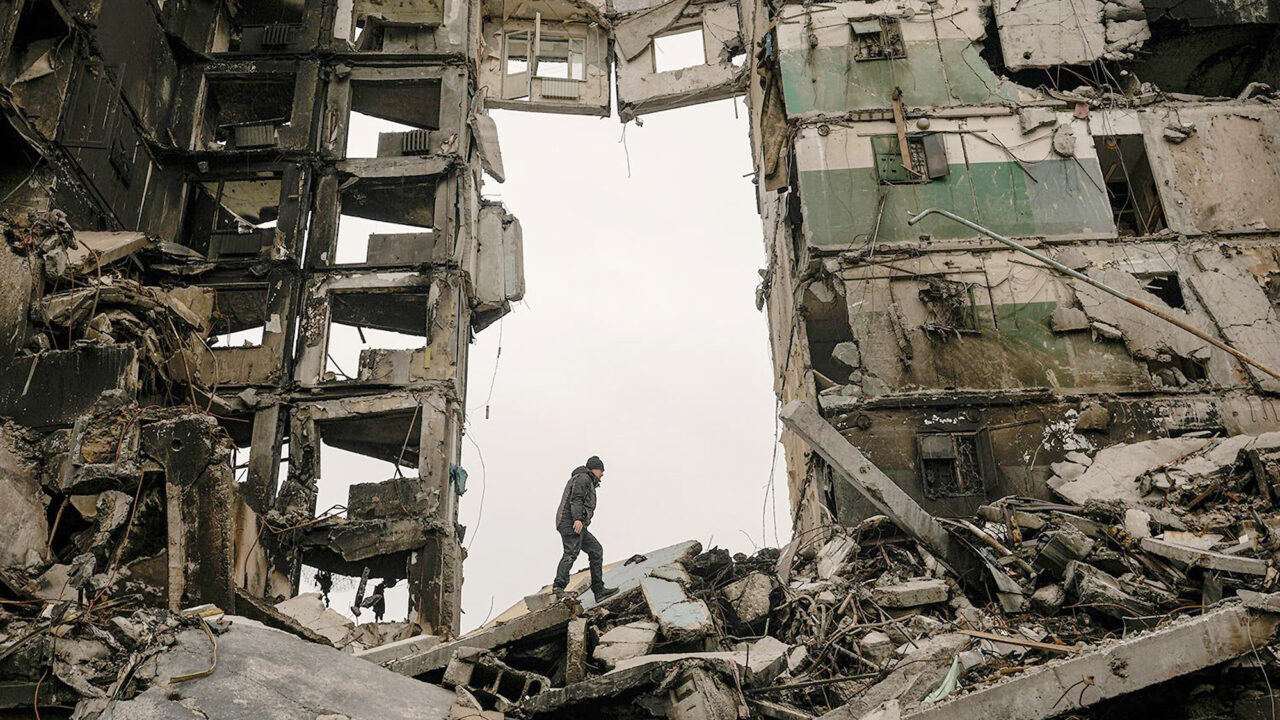Preparing for the Long War
Amid the euphoria following recent Ukrainian battlefield victories, some commentators are cautiously optimistic that Ukraine could win the war by the spring. But Vladimir Putin’s latest moves suggest that Russia is settling in for a long war of attrition that will test European resolve
A nuclear spectre is haunting Europe once again. Last week, Russian President Vladimir Putin ordered a mobilisation of some 300,000 reservists and announced that he will use “all available means” to defend Russia, adding, “This is not a bluff.” As one senior European policymaker noted to me, such nuclear brinkmanship is an invitation to dust off old cold war tomes such as Herman Kahn’s ‘On Thermonuclear War’.
To be sure, amid the euphoria following recent Ukrainian battlefield victories, some commentators are cautiously optimistic that Ukraine could win the war by the spring. But Putin’s latest moves suggest that Russia is settling in for a long war of attrition. In addition to issuing more strident threats, he has also reduced two significant asymmetries that have characterised the conflict so far. The first is the gap between Russia’s “special operation” and Ukraine’s whole-of-society response to it. Deploying 300,000 more soldiers may not be enough to overwhelm Kyiv or occupy Ukraine, but it will keep Russia in the game.
The other asymmetry is at the level of international support. Ukraine would have disappeared from the map many months ago had it not received billions of dollars of military supplies, intelligence support, and economic aid from Europe and the United States. By contrast, Russia has been at pains to attract any meaningful external support. But at the recent Shanghai Cooperation Organisation Summit in Samarkand, Putin got to catch up with fellow travellers like Chinese President Xi Jinping, Turkish President Recep Tayyip Erdogan, Belarusian President Aleksandr Lukashenko, and Iranian President Ebrahim Raisi.
Putin’s most important supporter is Xi, who has continued to stand by him. As I learned from speaking with Chinese academics this summer, China seems to view the situation in Ukraine as a “proxy war” in its own looming cold war with the US. A pertinent lesson from the original cold war is that when both sides in a proxy war are receiving enough support to keep them afloat, neither side will ever prevail. While the Ukrainians have used this fact to argue for continuous Western arms shipments, it also could motivate China to scale up its practical support (namely, trucks and semiconductors) to Russia.
If the conflict does move in this direction, we know what the result will be. The people of Korea, Vietnam, Guatemala, Afghanistan, Angola, and many other places can all attest to the horrors of proxy wars that drag on for years or even decades, soaking their countries in blood, crippling their economies, and depriving younger generations of a future.
Still, in the short term, the West must show that it is not cowed by Putin’s threats of escalation. As my colleagues at the European Council on Foreign Relations have shown, Europe can weather a long war if it adopts a comprehensive plan to provide Ukraine with the three key elements of military supplies, security assurances, and economic support.
For the first pillar, ECFR has devised a “leopard plan” to furnish Ukraine with desperately needed armoured vehicles, and has outlined concrete ideas for gradually supplying Ukraine with more Western technologies as its old Soviet kit runs out. But, in addition to careful planning and execution, this will require money. Given that Ukraine’s army is larger than the Bundeswehr (the EU’s largest land force), and that its armoured brigades outnumber those of Britain, France, and Germany combined, we estimate that its military supply needs will cost €100 billion ($97 billion).
Second, to agree to a settlement to end the war, Ukraine will need credible long-term security guarantees. To that end, my colleagues have developed a framework comprising formal assurances of support, consultation mechanisms, promises of supplies, and threats of sanctions. These should apply only to territories that are fully controlled by Ukraine, so that Ukrainian leaders will not have to concede any occupied territories in order to agree to a settlement.
Finally, economic support must cover not just the costs of rebuilding the country and preparing it for integration into the European Union but also the Ukrainian state’s ongoing day-to-day needs. Right now, tax revenues are covering only 40 per cent of public spending, leaving a $5 billion monthly funding gap.
Maintaining European political support and solidarity will be the biggest challenge, especially as the costs of the long war continue to rise. According to some of our estimates, supporting Ukraine in the ways described above could cost more than €700 billion. That is larger than the EU’s pandemic recovery plan, which was already seen as a revolutionary step even though it applied to all member states. Mustering the same level of support for a single non-member state will require a heroic feat of political leadership.
Maintaining European political support and solidarity will be the biggest challenge, especially as the costs of the long war continue to rise.
Moreover, the winter will bring mounting energy bills and higher costs for housing-desperate Ukrainian refugees. Governments have already been toppled in Italy and Bulgaria, and the far right seems to be making gains on a new populist wave. European leaders will need to prepare their populations for a long war while also continuing to search for solutions. Even as they demonstrate their long-term commitment to the Ukrainian struggle, they must structure their support in ways that will keep the door open for an eventual settlement. An endless proxy war is one of the last scenarios that anyone should want.
This article was first published on Project Syndicate.
The European Council on Foreign Relations does not take collective positions. ECFR publications only represent the views of their individual authors.



